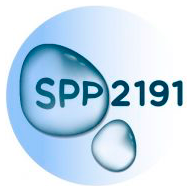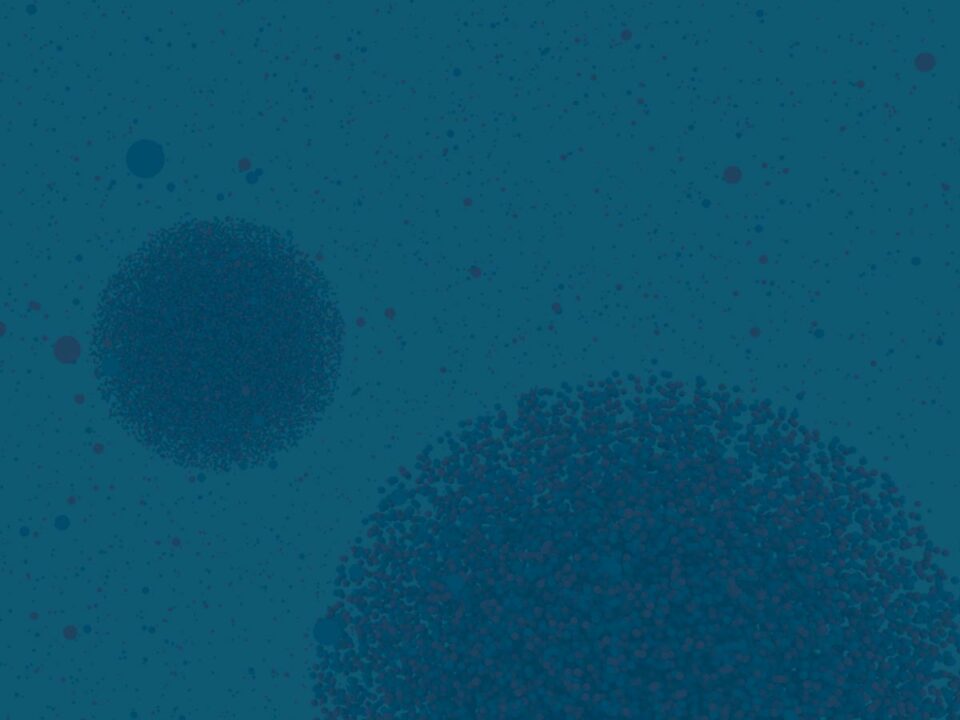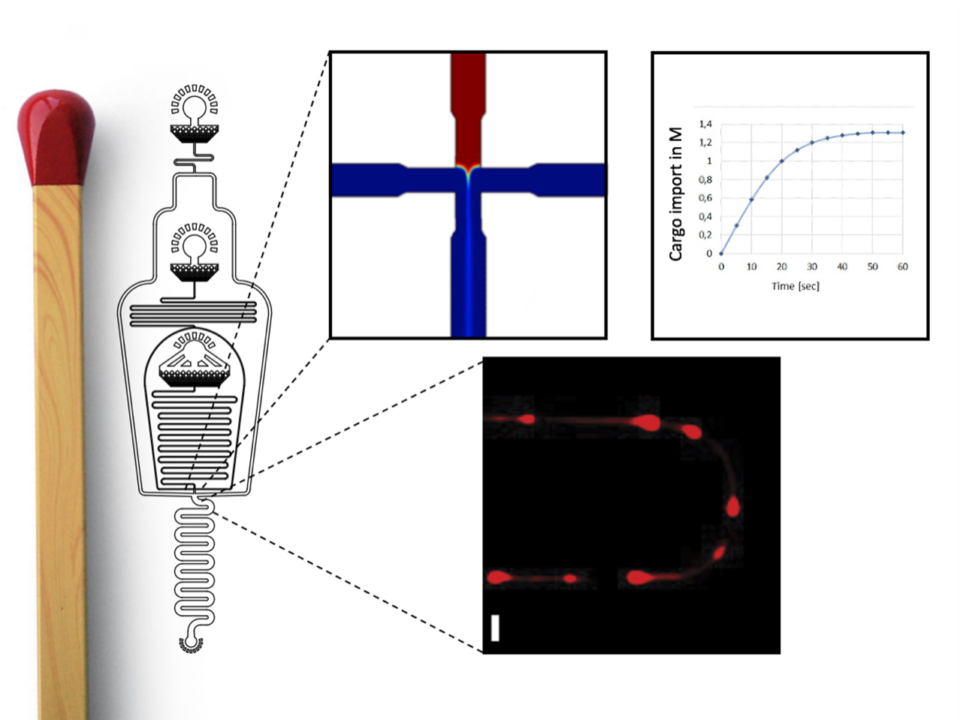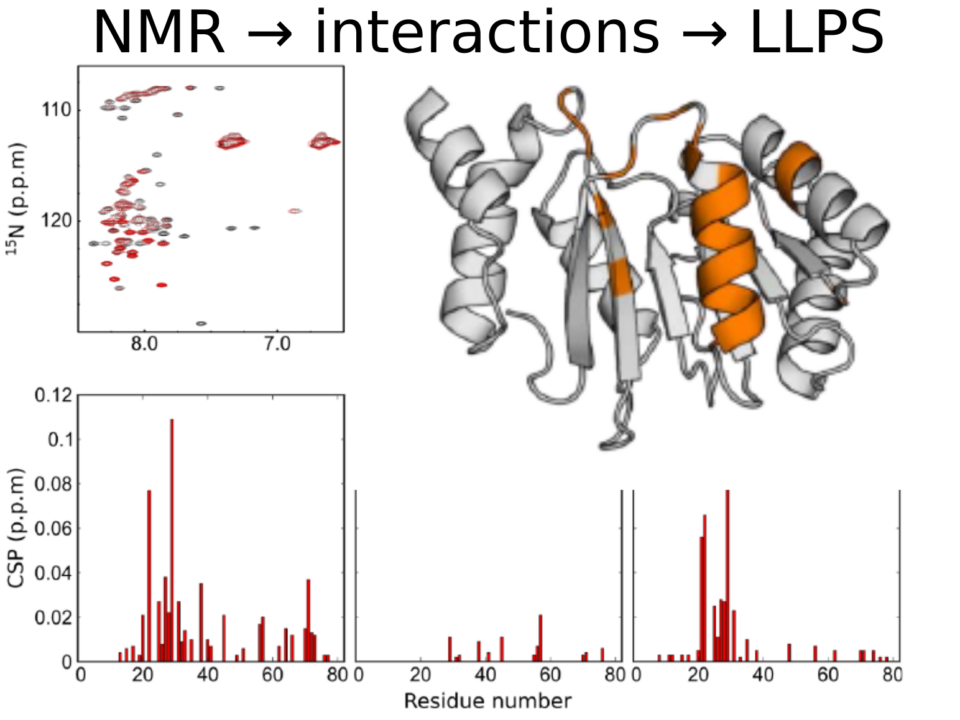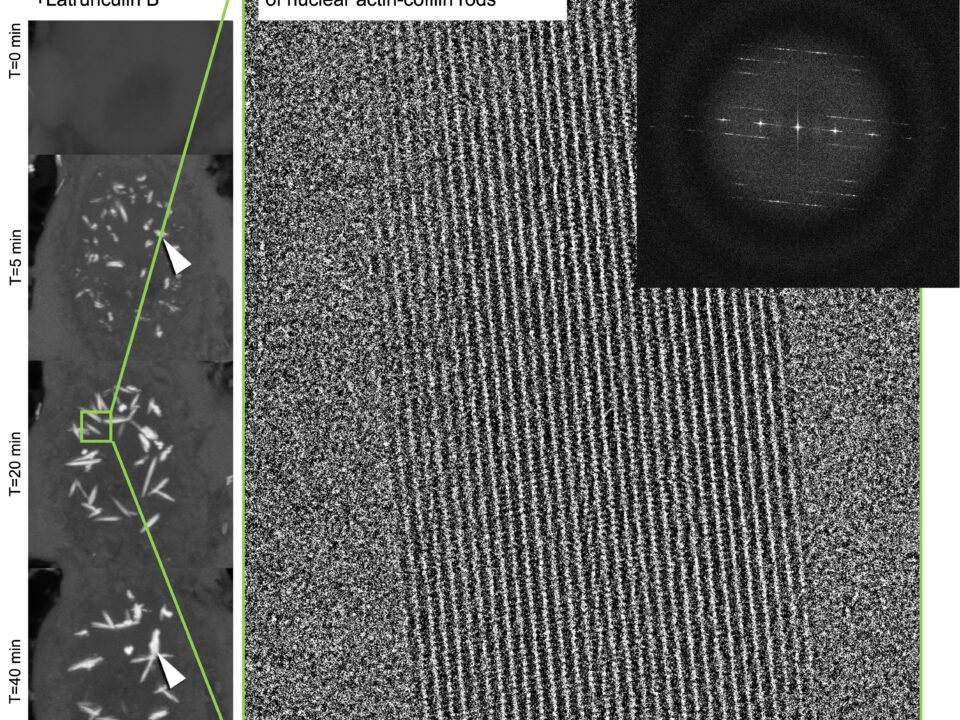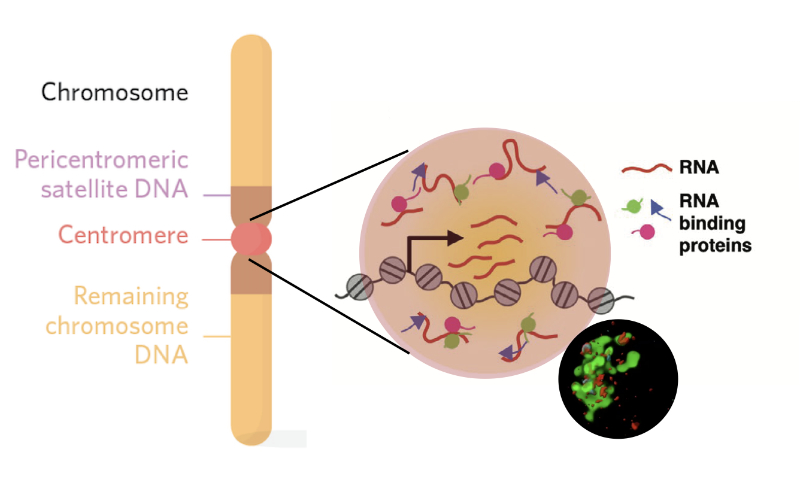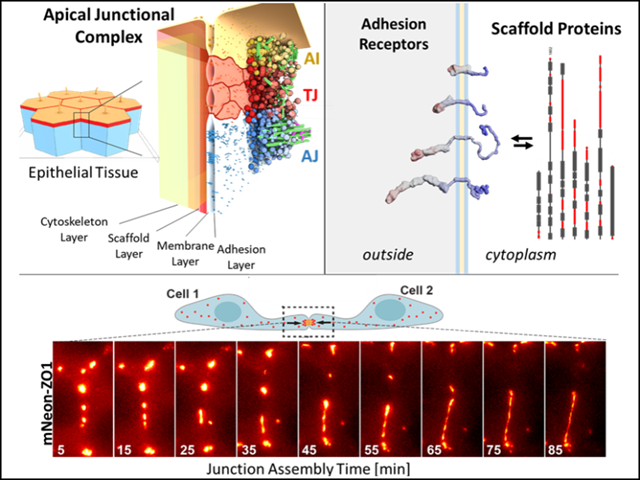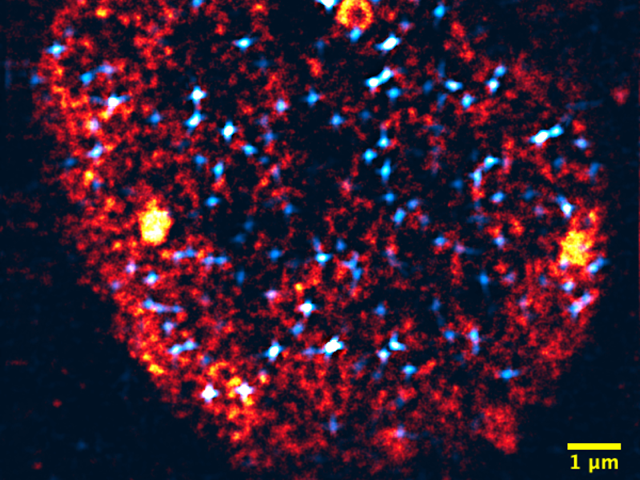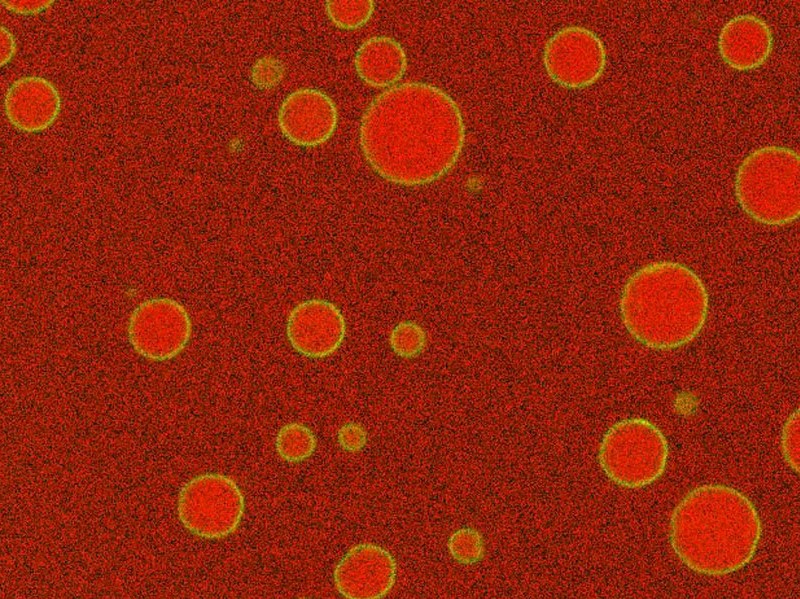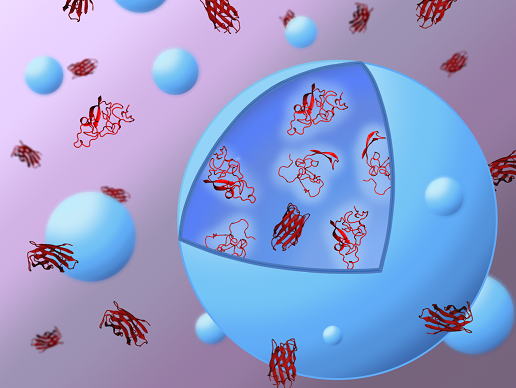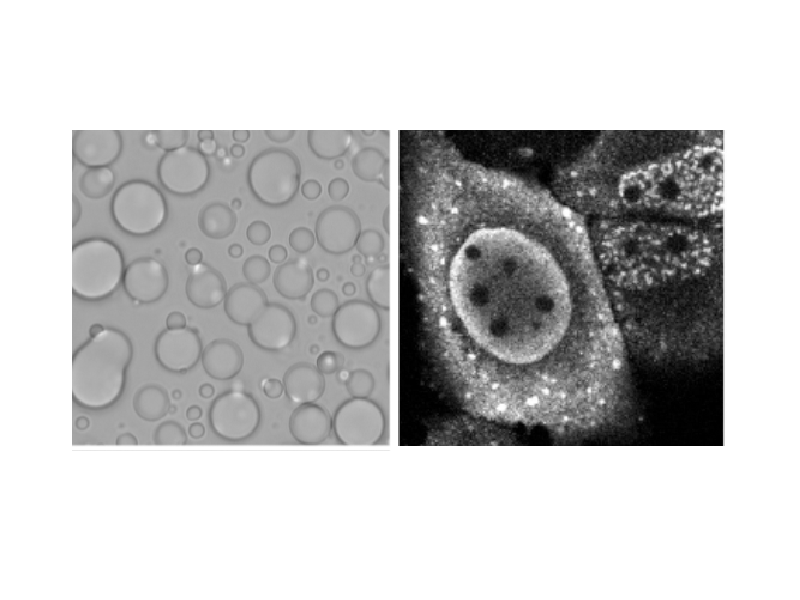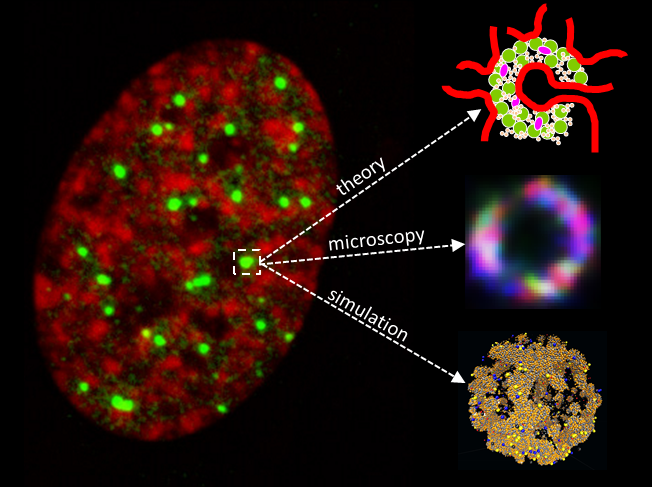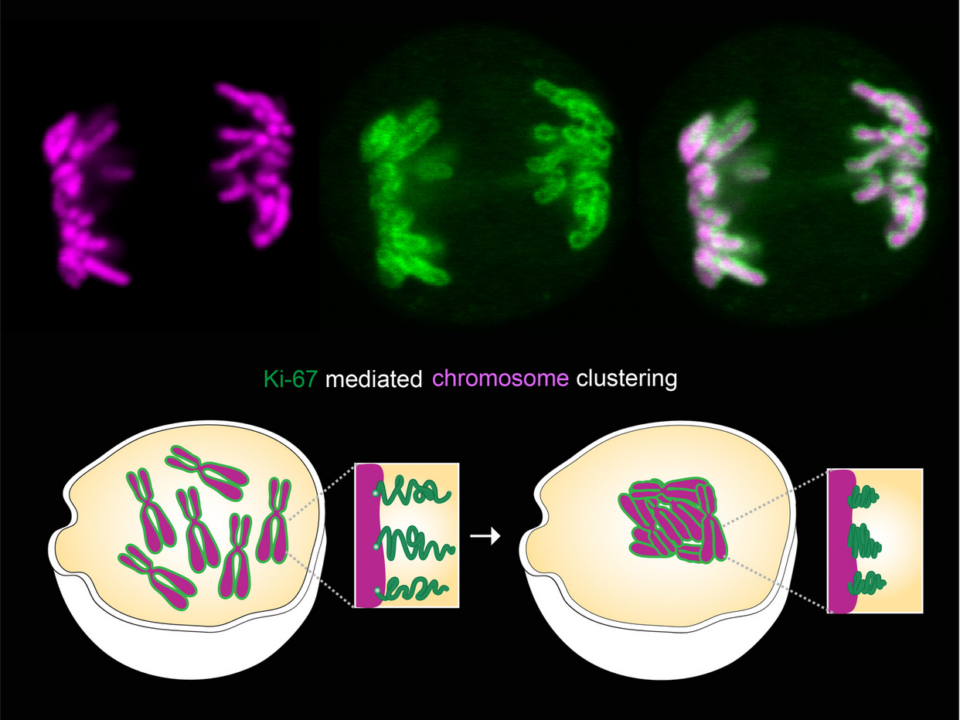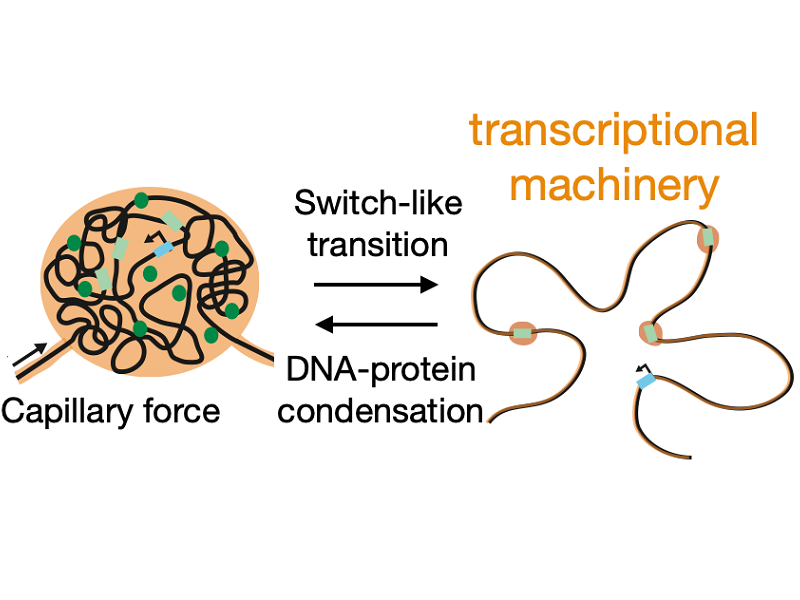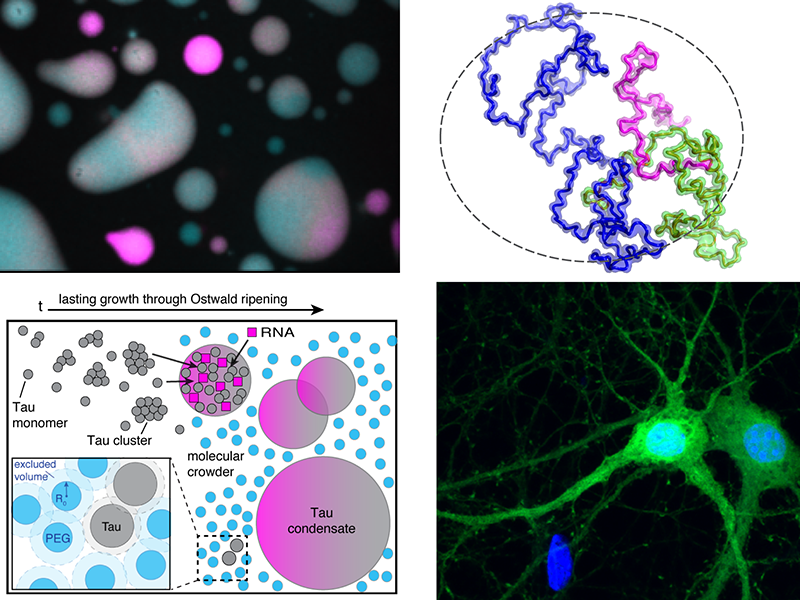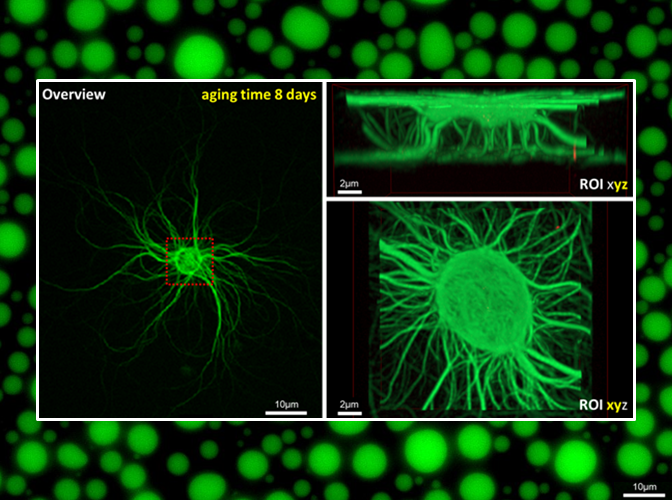- SPP2191 of the DFG
2019 – 2021
- We develop microfluidic workflows to map enzymatic activity and compositional control of tumour suppressor SPOP with its substrates in liquid nuclear bodies. Various membraneless bodies that form through liquid phase […]
- Mikael Simons +49 941-9437751 Institute of Neuronal Cell Biology (TUM-NCB)Technical University MunichGerman Center for Neurodegenerative Diseases (DZNE)Feodor-Lynen-Straße 1781377 Munich Office: +49 89 440046495 Lab: +49 89 440046479
- The nuclear pore complex (NPC) is a ~120 MDa complex built from multiple copies of ~30 different nucleoporins (Nups). The NPC traverses the nuclear envelope and functions as “gatekeeper” for […]
- Processing-bodies (P-bodies) contain the machinery that is involved in 5ʼ to 3ʼ mRNA degradation. This includes the DEAD box RNA helicase Dhh1 as well as the mRNA decapping enzyme Dcp2, […]
- Actin is the most abundant protein in most eukaryotic cells and is well known for its capability to polymerize into dynamic filaments in the cytoplasm. Actin is now also recognized […]
- Pericentric heterochromatin in mouse and Drosophila assembles via heterochromatin protein 1 (HP1) in a self-organizing manner into distinct nuclear subcompartments that are called chromocenters. During development chromocenters change their structure […]
- Stochasticity in transcription and translation causes substantial cell-to-cell variability in protein concentrations across isogenic cells. A key question in biology is how cells manage to function robustly while their inner […]
- In this project we aim to understand how tight junctions (TJ) assemble into a continuous sub-apical belt in epithelial cells. Based on cell biological and in vitro data we hypothesize […]
- The cell nucleus displays a striking, widely conserved spatial compartmentalization. Inactive regions of the genome are sequestered to and compacted within a distinct comparment; active regions of the genome are […]
- Small RNA silencing serves to regulate genes but also as a defense against pathogens and selfish genetic elements. In insects, a specialization of small RNAs and their biogenesis factors for […]
- Intracellular membraneless organelles (MOs) form dynamically and thermodynamically reversible via liquid-liquid phase separation (LLPS). The molecular processes that drive MO formation are largely unknown, but recent deletion experiments showed that […]
- Aberrant liquid-to-solid phase transitions of RNA-binding proteins (RBPs) with prion-like low complexity domains (LCD) are thought to underlie the formation of pathological RBP aggregates in a number of neurodegenerative diseases, […]
- Membrane-less organelles in the nucleus of mammalian cells have been suggested recently to assemble and function via LLPS mechanisms. One main driver of LLPS at PML NBs appears to be […]
- Recent studies have demonstrated that membrane-less condensates assemble by liquid-liquid phase separation of proteins that share multivalency, intrinsic disorder and low complexity sequences as common characteristics. The details of the […]
- Transcription of protein-coding genes by RNA polymerase II (Pol II) is highly regulated during cell differentiation and organismal development. In human cells, Pol II transcription is regulated by ~1,600 transcription […]
- Transcription hubs of transcription factors and RNA polymerase II have been observed in tissue culture cells and embryos. These transcription hubs are assembled through a phase separation mechanism driven by […]
- The neuronal tau protein is involved in the regulation of the axonal microtubule skeleton in the brain. In neurodegenerative diseases such as Alzheimer’s disease (AD) and Frontotemporal dementia (FTD), tau […]
- This project led by the Alberti and Guck teams will develop a new combined fluorescence, optical diffraction tomography and Brillouin (FOB) microscope and to use FOB microscopy to study physiological […]
- The Alberti and Seidel teams will join forces to investigate the conformational dynamics of Fused in Sarcom (FUS) in vitro and in living cells using cutting-edge single molecule technology such […]

